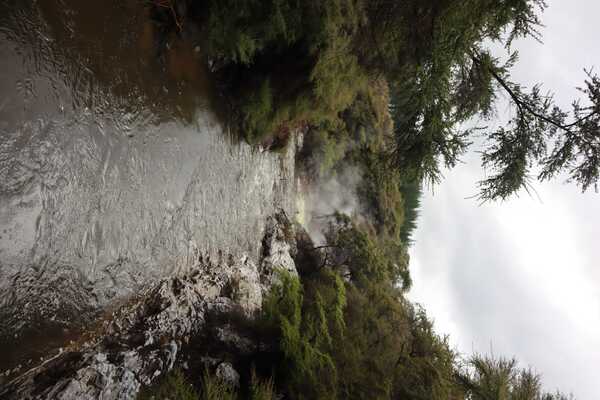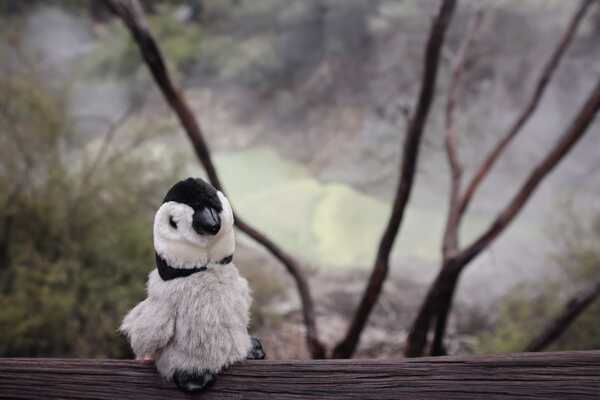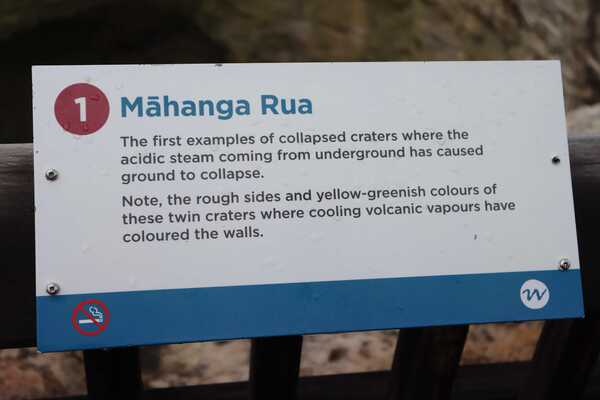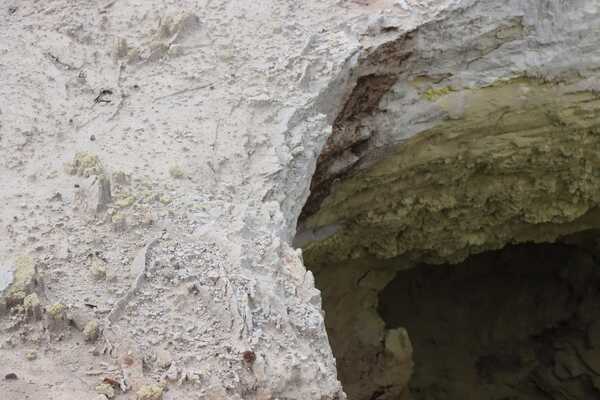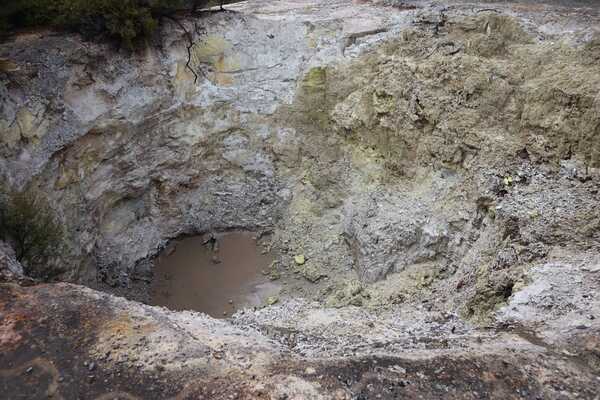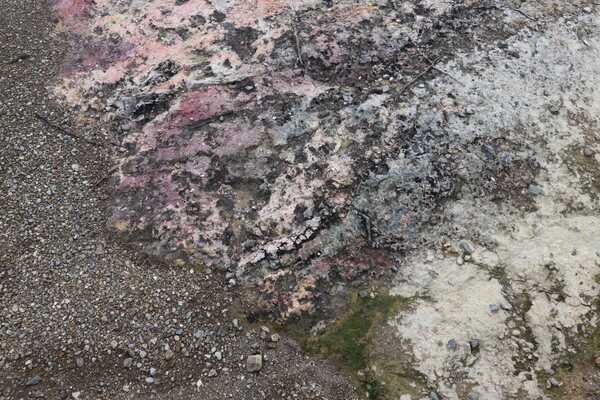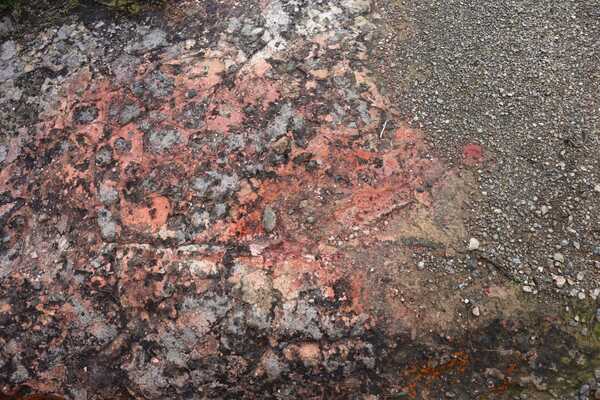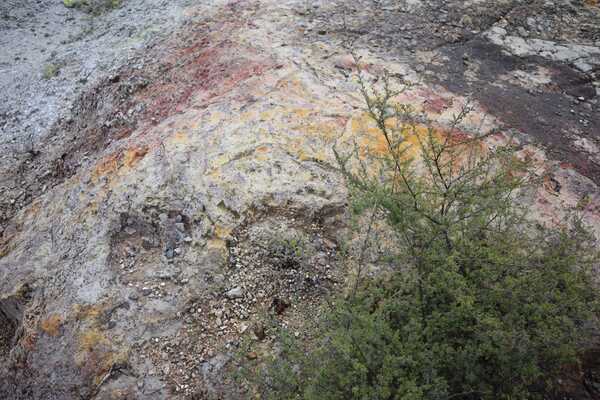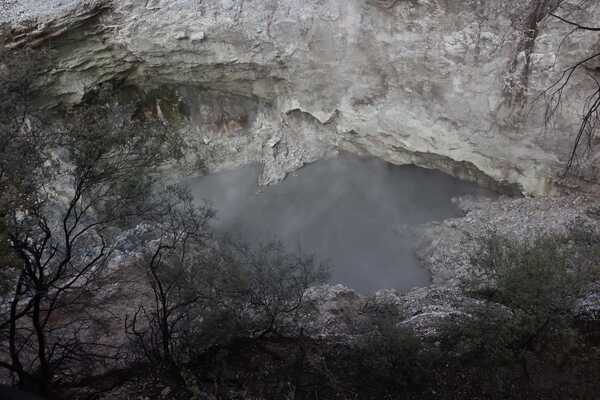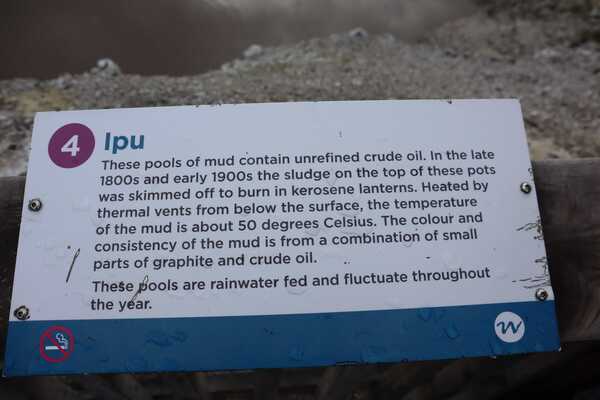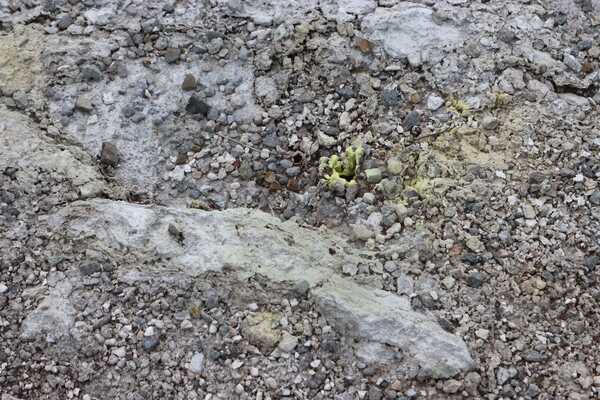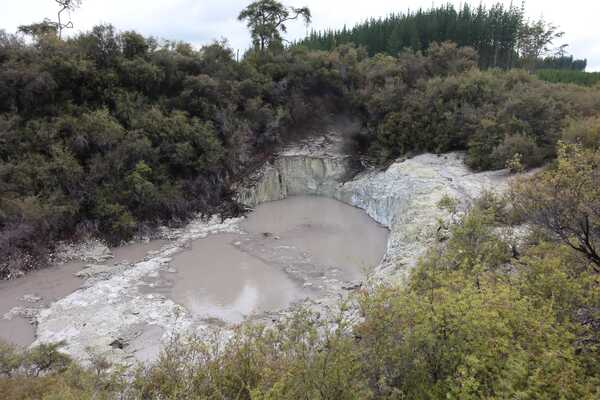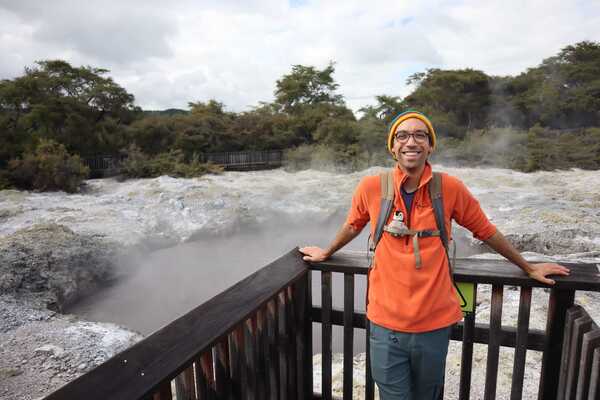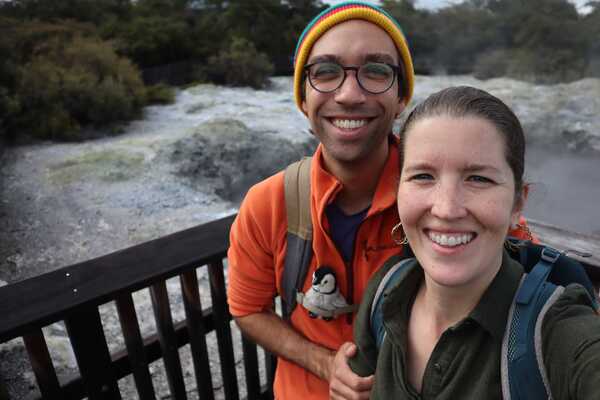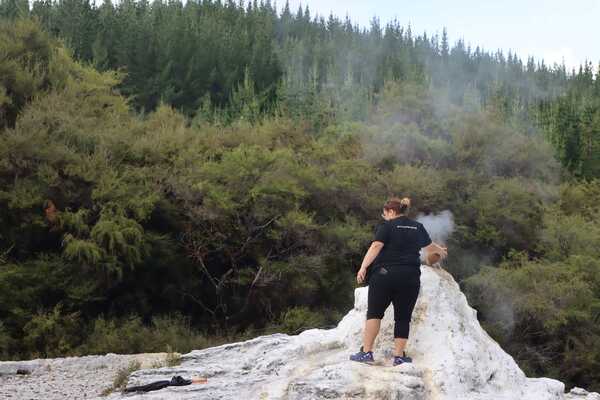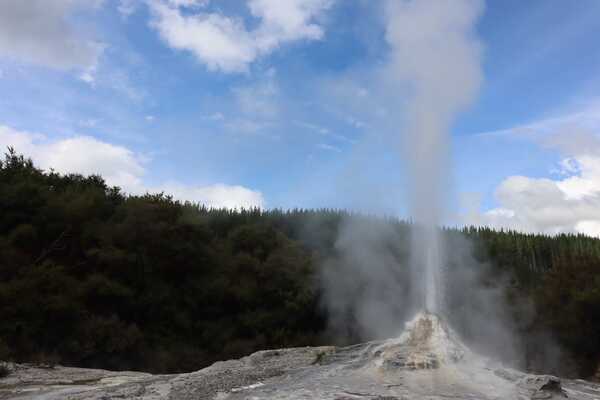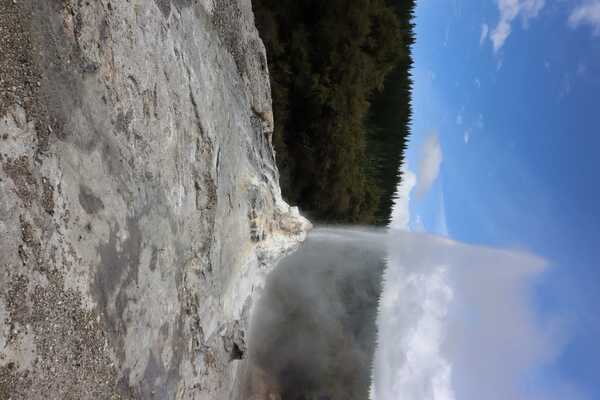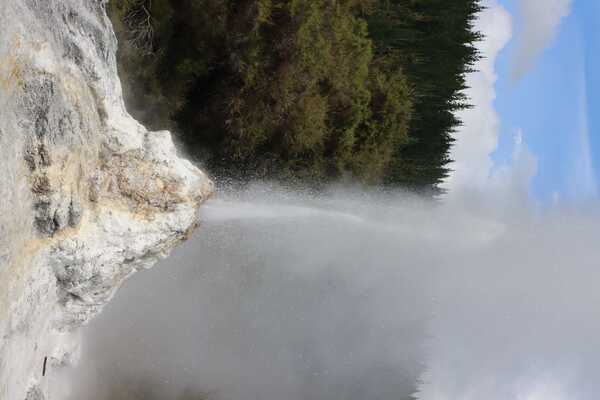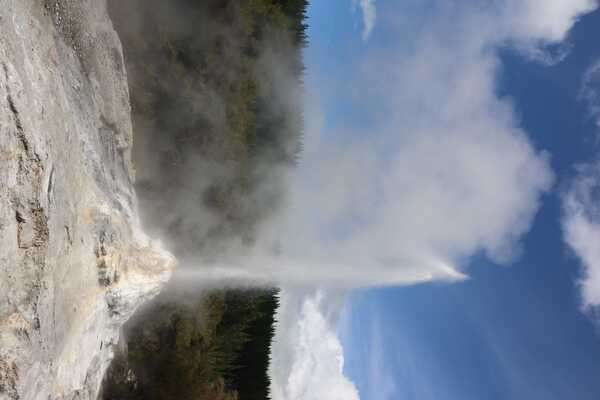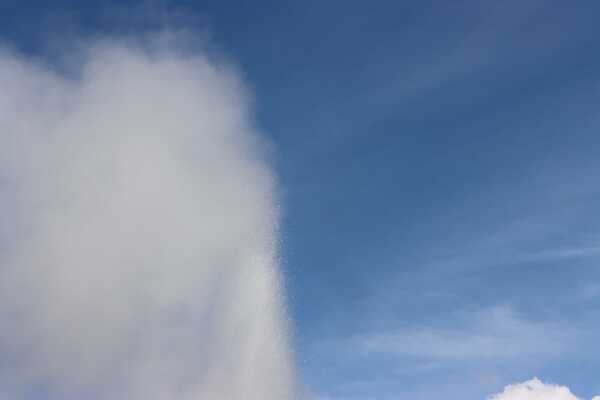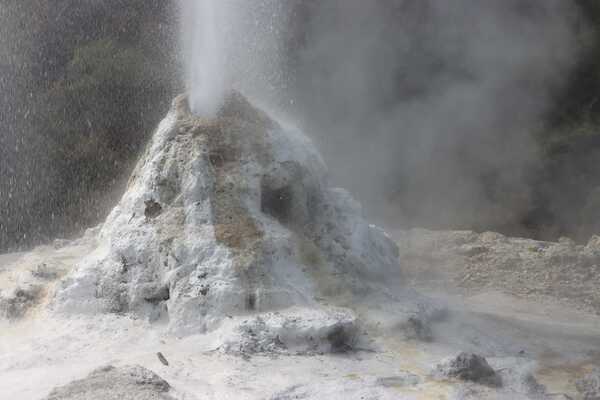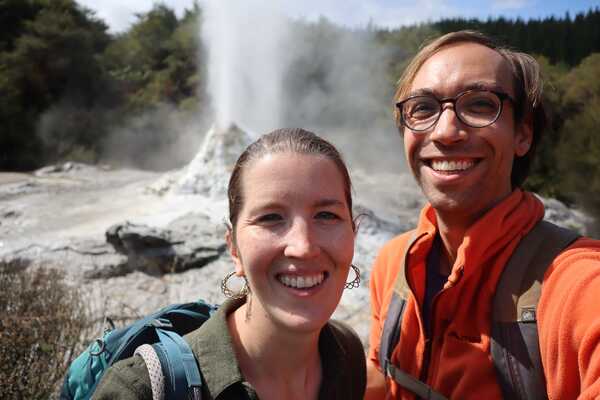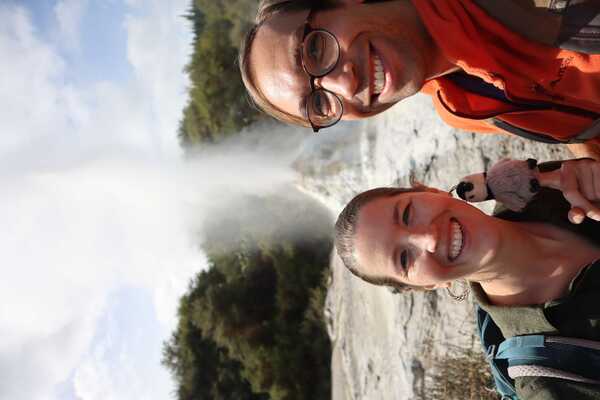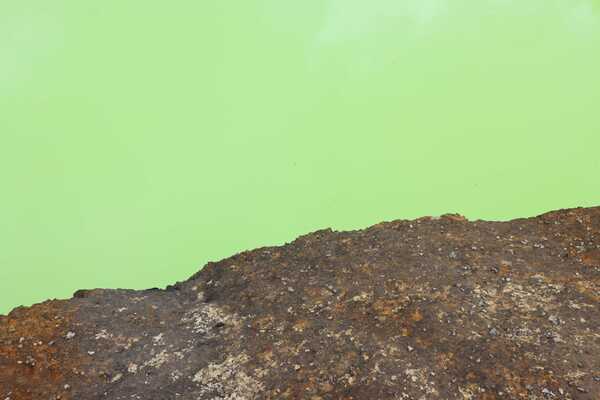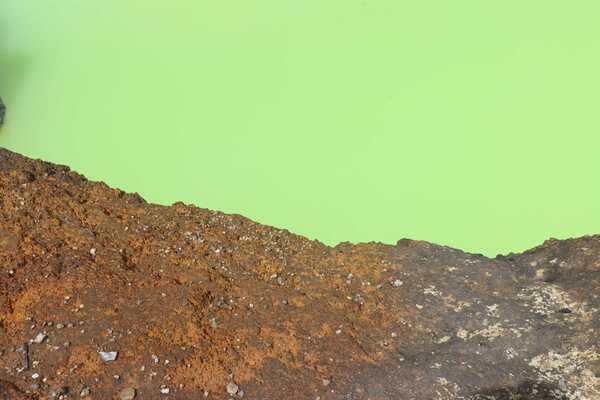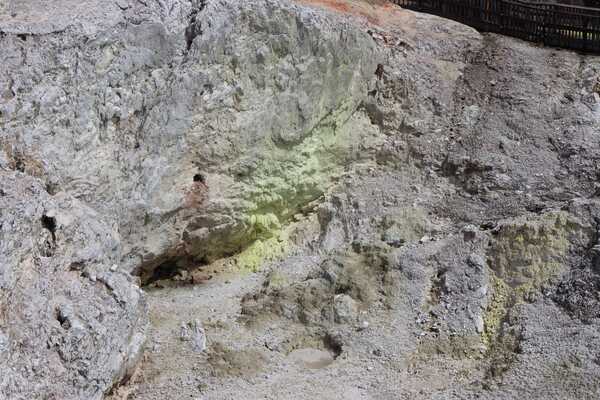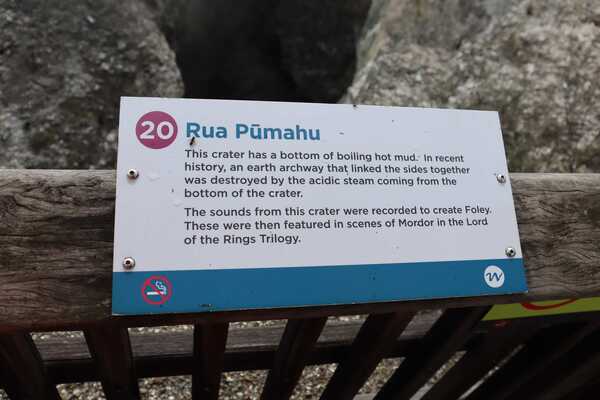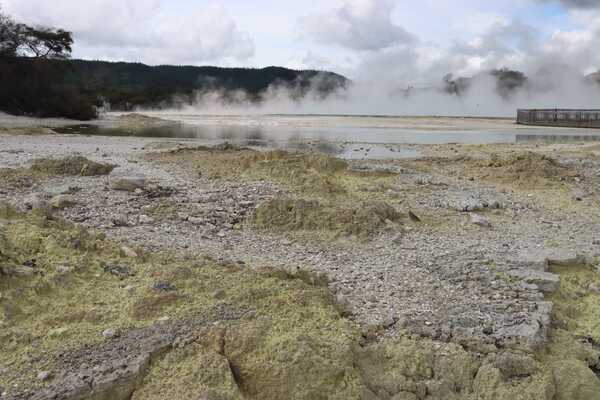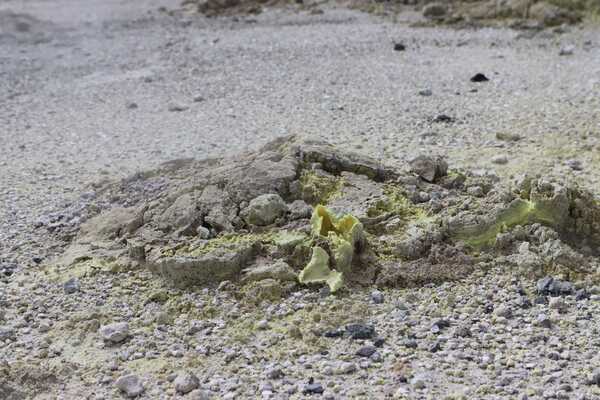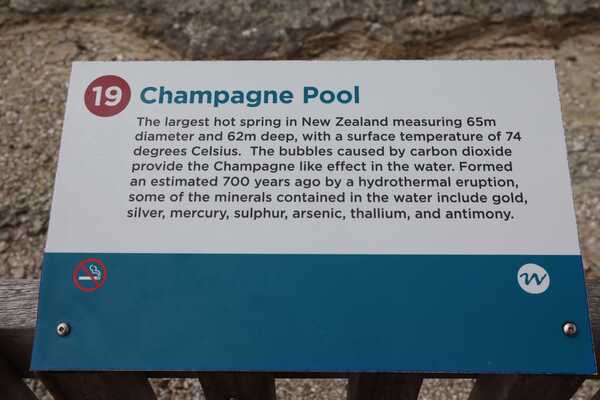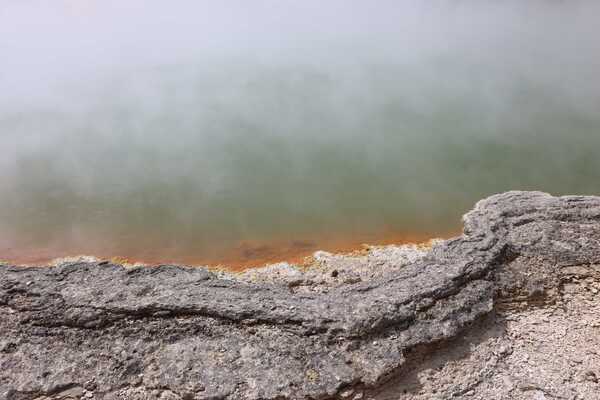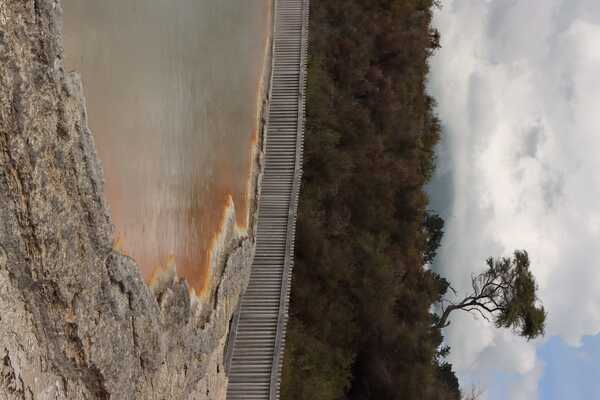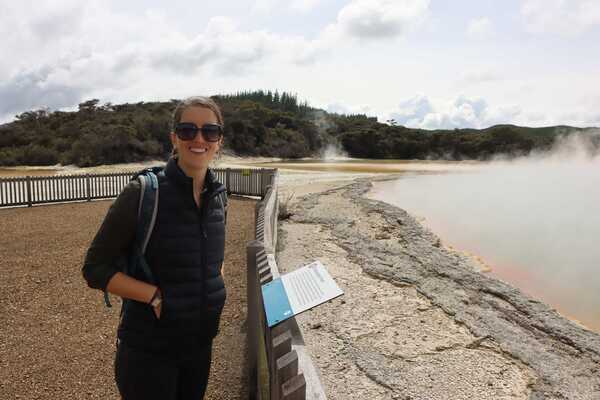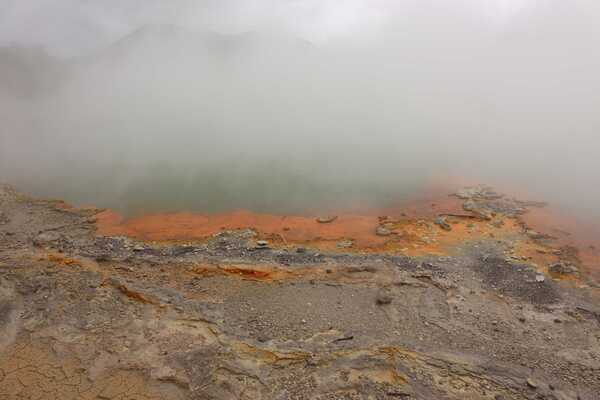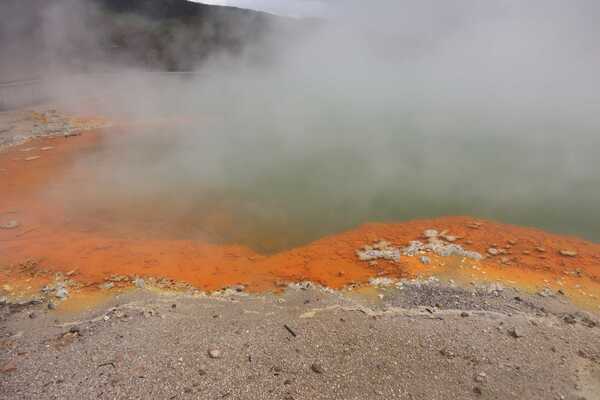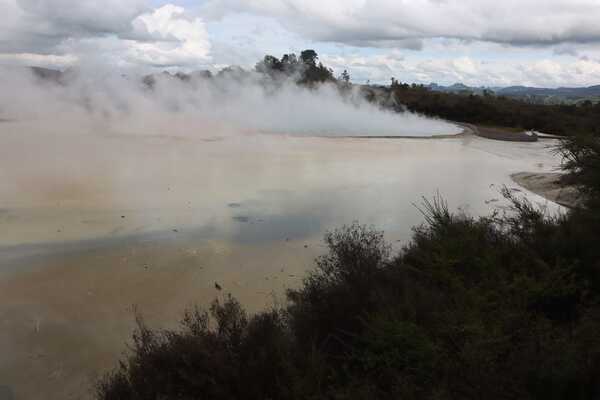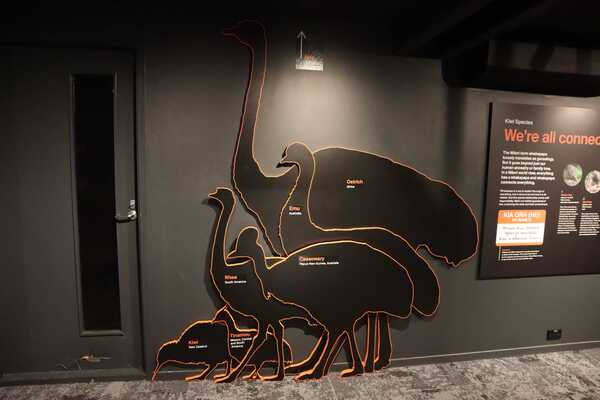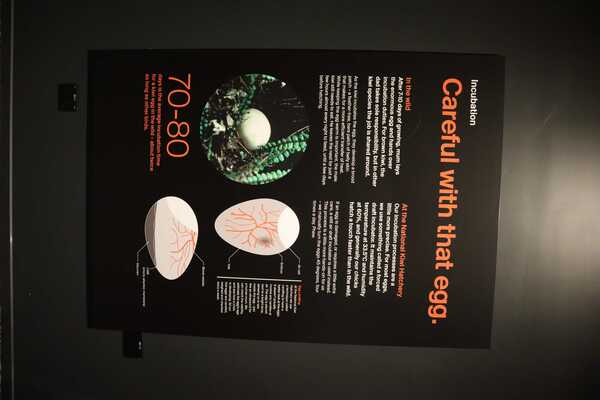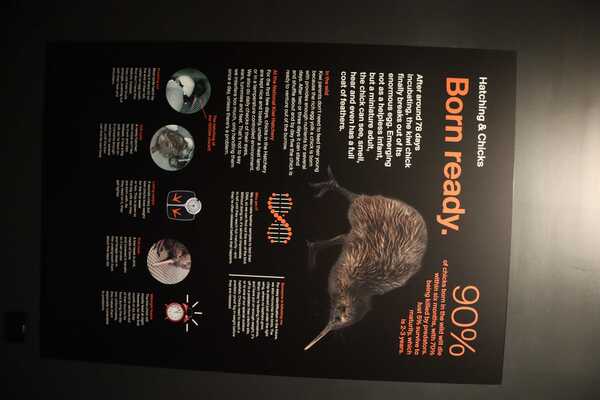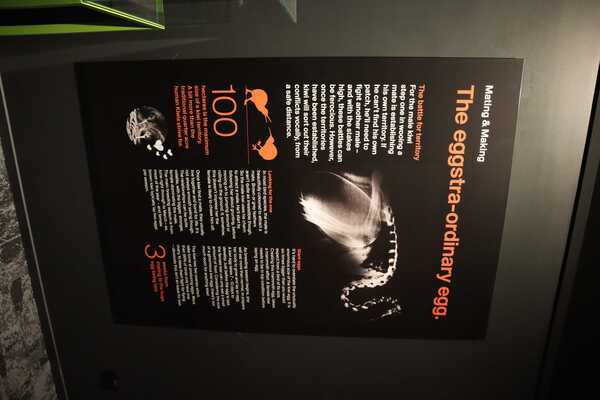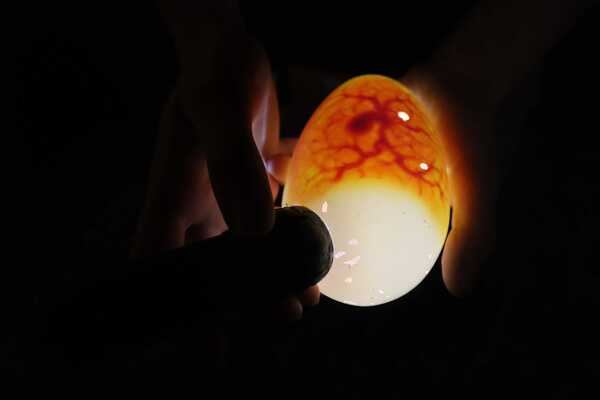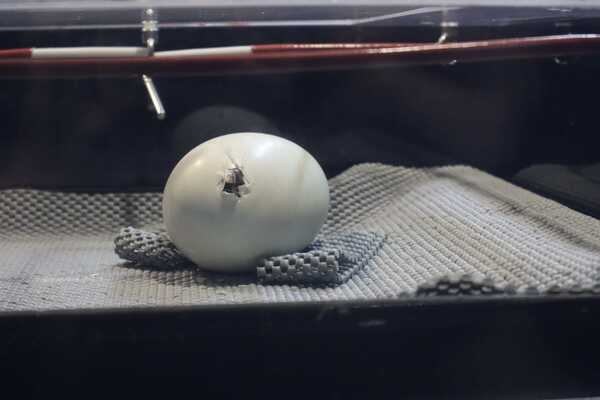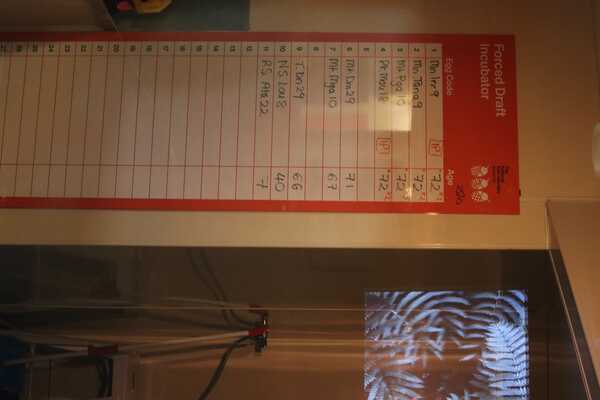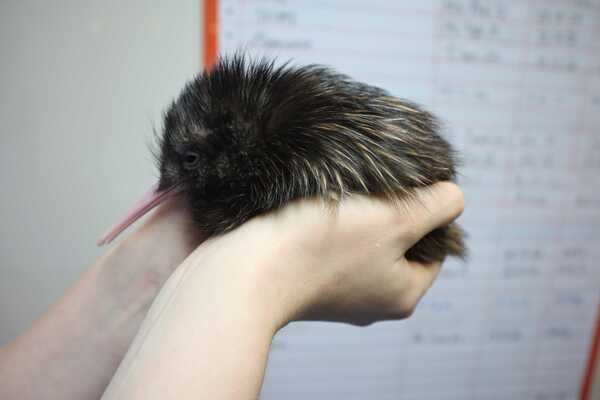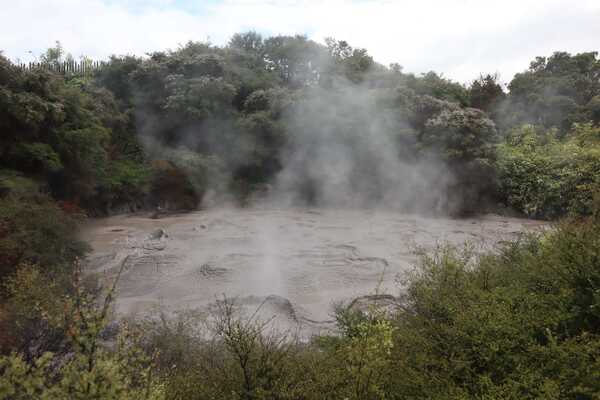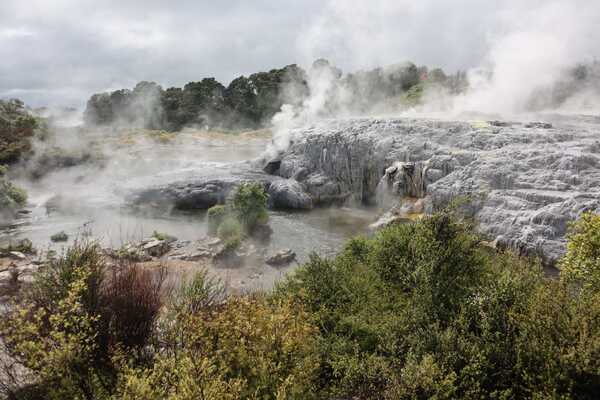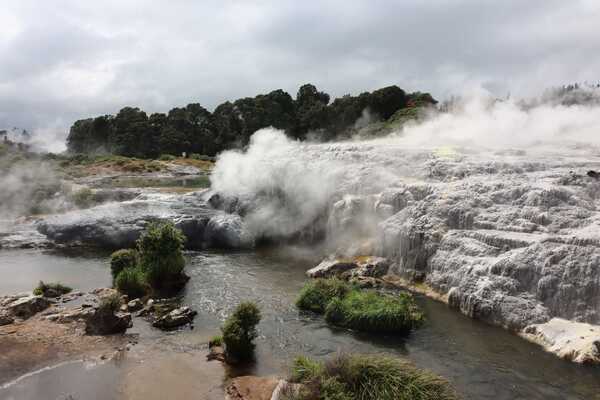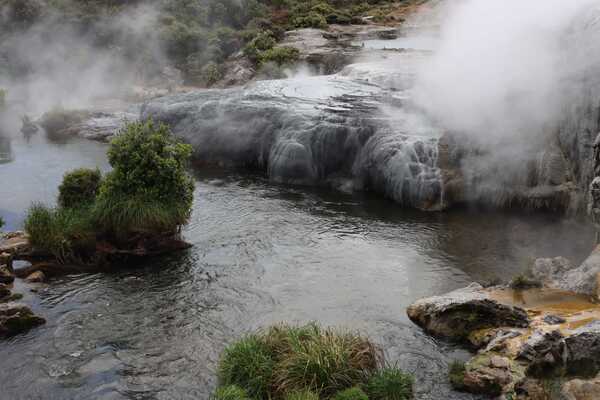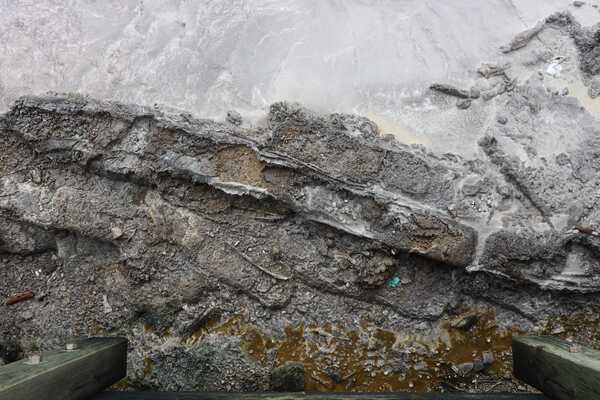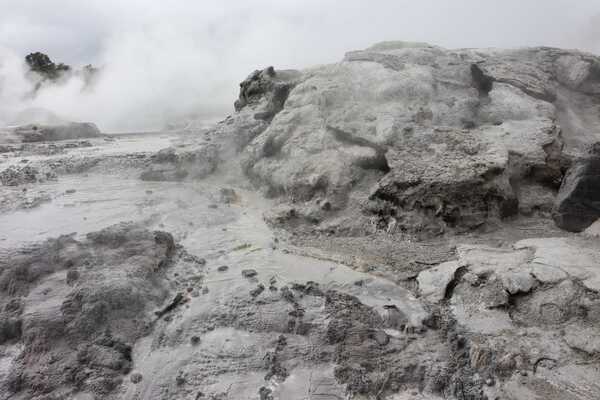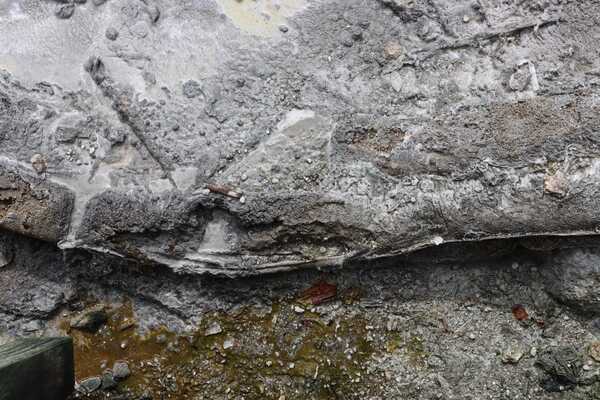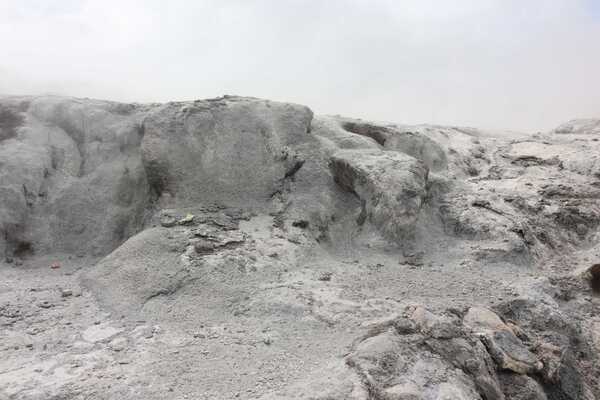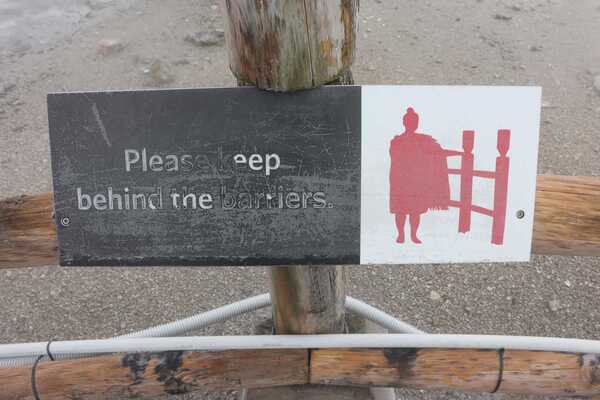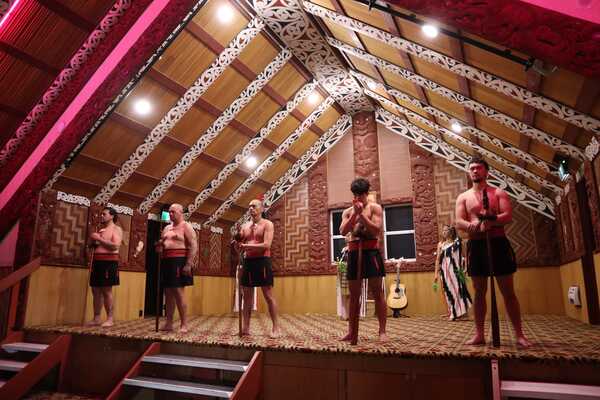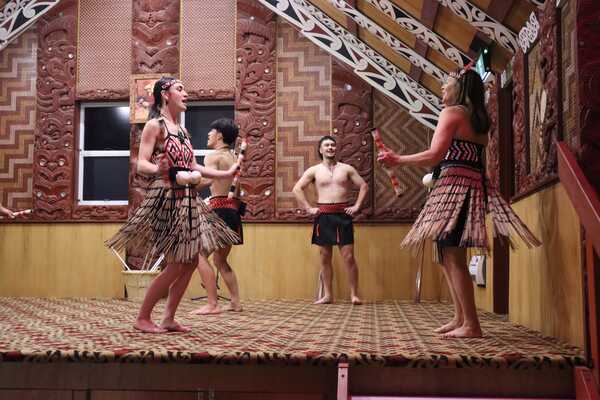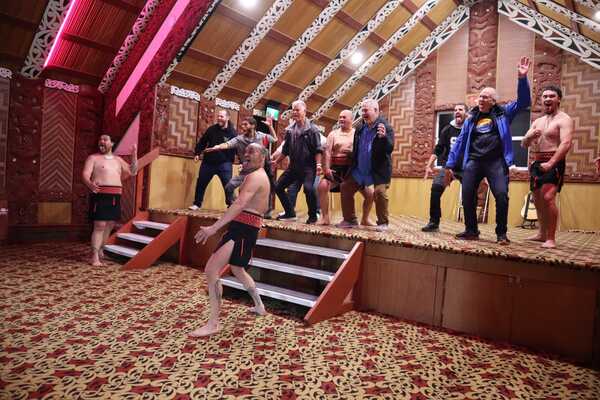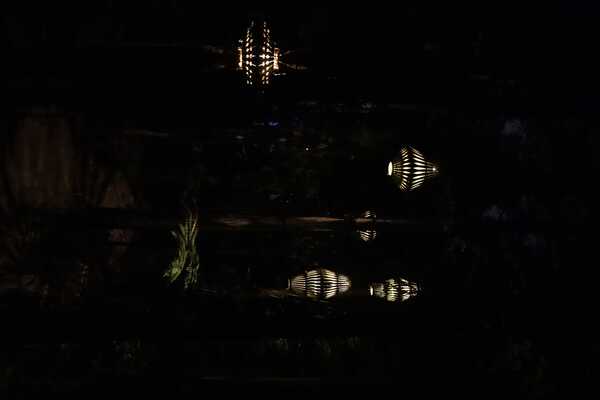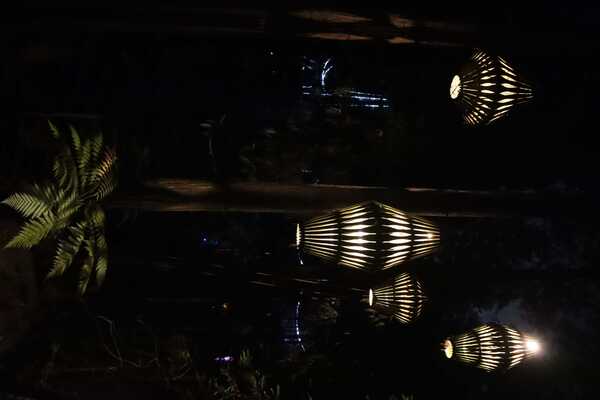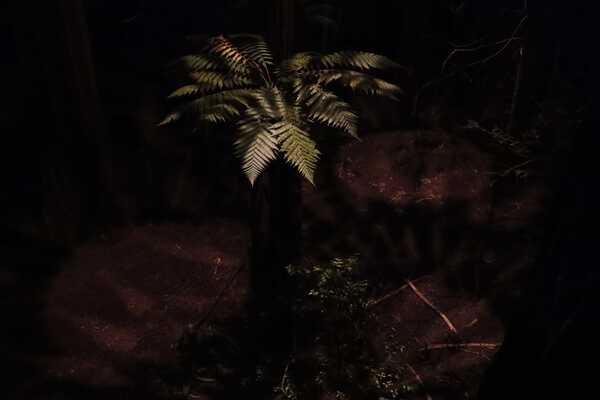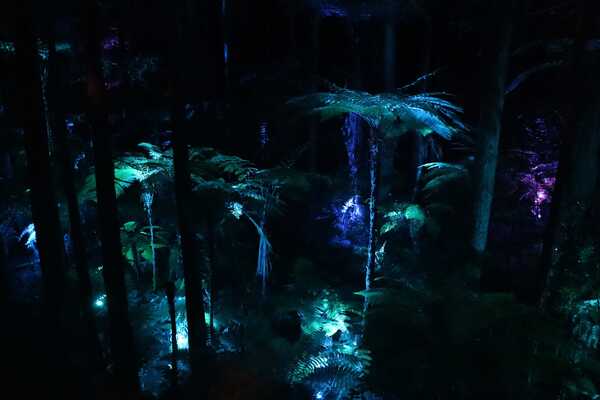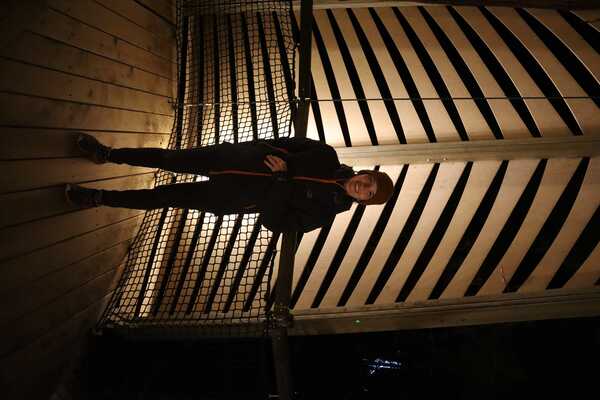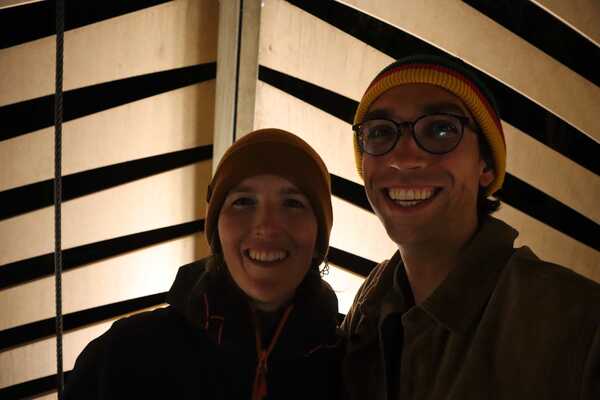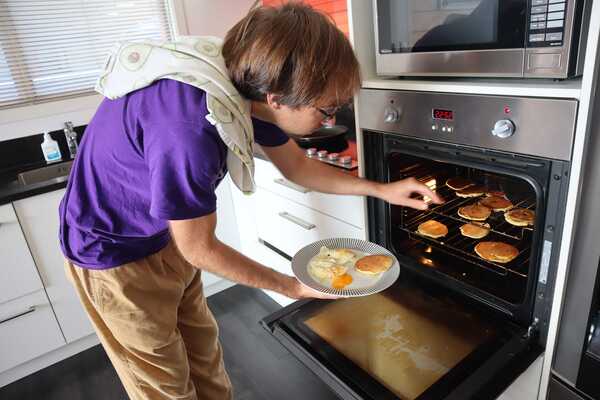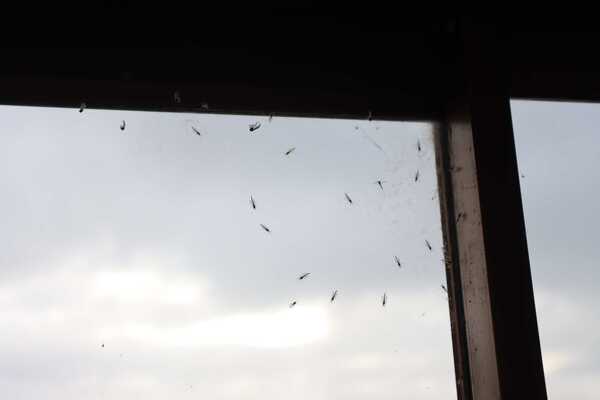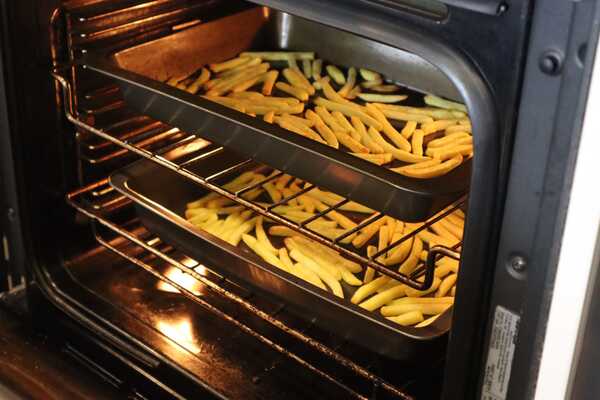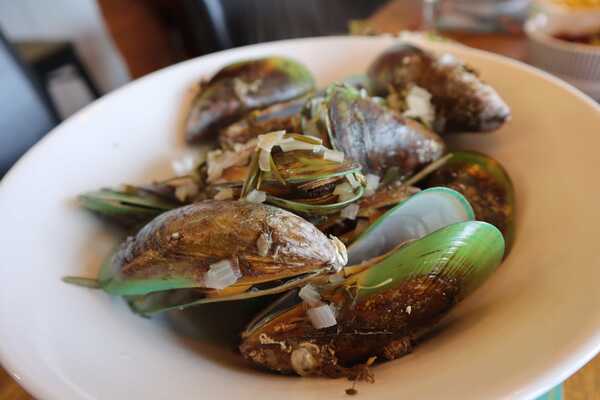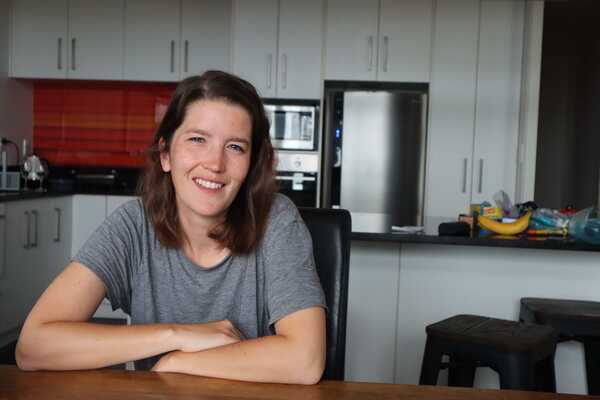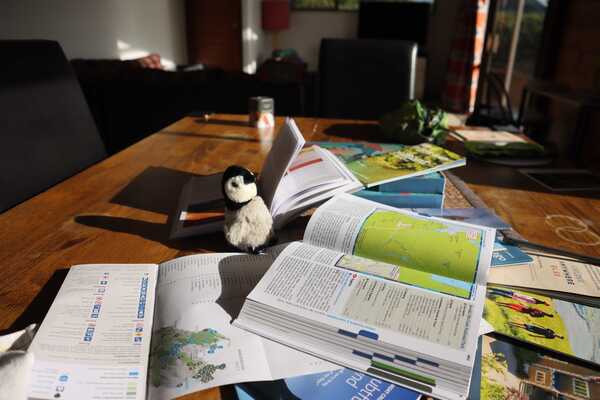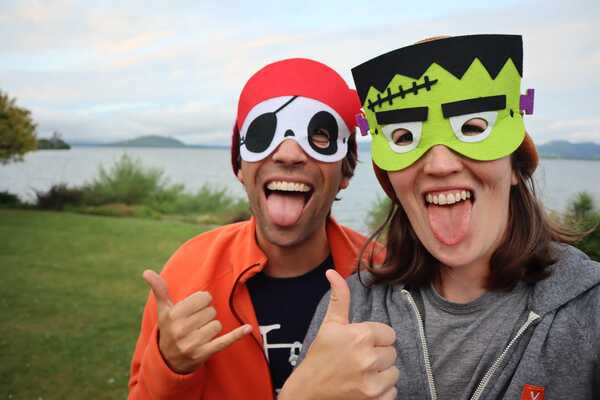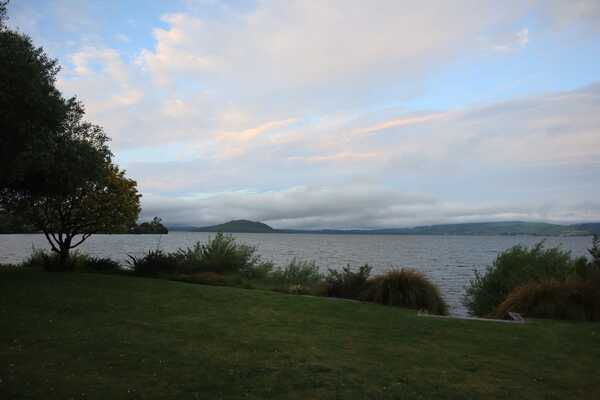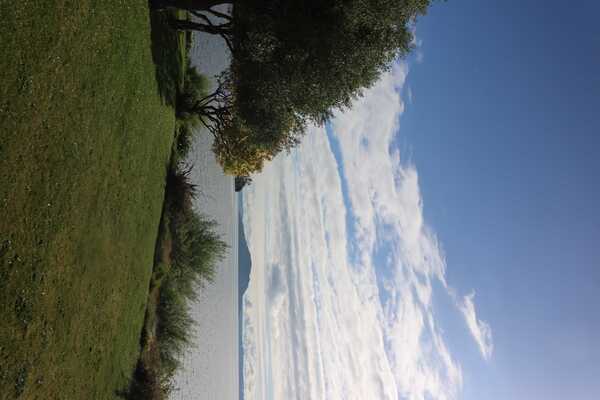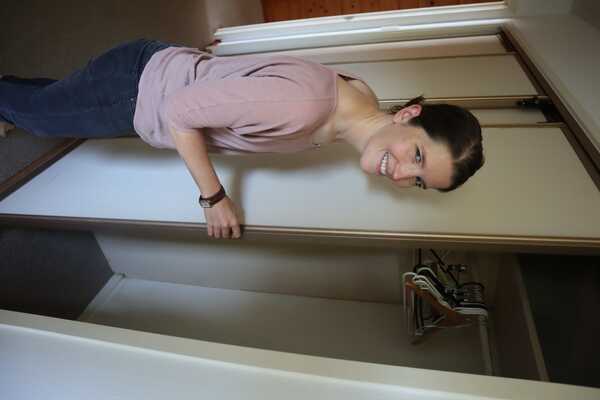DRAFT: Rotorua
After hiking the Tongariro Northern Circuit, I booked us into a house in Rotorua on a lake via Airbnb. Rotorua is a town in Northern New Zealand most known for its geothermal activity. The whole town smells a little like sulphur, sewers steam on the sides of the road, and there are lots of tourist attractions around geysers, geothermal pools, and everything in that department.
After doing a backpacking trip, arriving at the house on the lake was perfect. While the lake smells slightly like sulphur, it wasn’t quite warm enough to want the windows open - which made its location perfect. The house had three bedrooms, which we quickly used: our sleeping room, dirty laundry from camping (and generally) room, and “air out the sleeping bags” room. We took that evening to organize our stuff into “wash me” and “clean”, putting food away, and figuring out dinner. It was a nice, calm Thursday evening and we were both excited to shower and wear cotton again.
[lake photos]
Rotorua was also one of our last “relax in a place” moments before we had several friends and family join us: Tim’s sister and brother-in-law, and a friend of ours from DC. We would be traveling with folks for six weeks of our nine weeks in New Zealand. We are super excited to have our community join us, and wanted to also make sure we had a moment to reconnect before this happened. This was happening in Rotorua, from Thursday to Tuesday. A good, long weekend.
Friday - Banana Pancakes, Redwoods, Relaxing, and Logistics
On Friday morning, Tim made us pancakes - specifically banana pancakes! We listened to Jack Johnson’s song “Banana Pancakes” and danced around while making breakfast. We set a beautiful breakfast on the porch overlooking the lake. Birds were diving in and out of the lake fishing. And it was just perfect.
[banana pancakes]
In listening to the song, I realized that, for us, every day is a Saturday. The song has the lyric “pretend like it’s the weekend” and we do that every single day. Additionally, what you do on your weekend depends on what is happening in your life: it is resting and recuperating, adventure, camping, museums, nesting back after travel, etc. Our weeks vary in the same way as our pacing. And on this Friday (aka fake Saturday), we needed to recuperate. Just to do laundry (all 5 loads), relax, watch Netflix, and have a simple day. We ate all our meals at “home”, and it felt really good. We had several weeks of logistics and camping gear and other things hanging over our heads, and this felt like the first moment when those had resolved and we could relax.
For the majority of this trip, I had been handling our “logistics”: location research, stay bookings, top activities, thinking about the calendar, etc. Frankly, I am really good at it and can easily research and make decisions about where to generally go, as it is part of what I do at work also. At work, I pick somewhere to start, synthesize huge amounts of information, do some research, and put together the next action steps. Researching “where to go scuba diving in Asia in late October”, “safari in Africa” or “top New Zealand spots” all fall into this quite easily. On the other hand, Tim, as a software engineer, focuses on understanding one problem really well and solving it before moving to the next. This is great for “how to buy a car in New Zealand”, “things to consider when doing XX” or “top 4 things to do in a city”. What this means for broad strokes of trip planning is that I end up tackling it sooner and faster, meaning I have done more of it. This is quite exhausting, and we’d been talking about shifting this dynamic for a while.
Leading up to this weekend, Tim made it clear that he wanted to take some of the logistic burdens from me for organizing our New Zealand group for the South Island exploration. I had loosely stubbed out the locations where we would go from everyone’s interests and a Lonely Planet Highlights book I’d found. He was taking this loose plan and making it real with activities, stays, and exact dates in these different places.
Tim was amazing! He researched places in different towns and sent out a survey to the group to see what folks were interested in on a 5-star scale. He found amazing houses for us to stay in within our general budget ($50/person/night in USD for New Zealand). He coordinated everyone and figured out things to do when lots of recommended things were closed for COVID. We chatted about possibilities, and sorted this out for an exciting trip with our friends! By Monday afternoon, we had a plan and stays booked for the first couple of weeks with the group!
He encouraged me to take the day “off.” So I did some reading and lots of Netflix watching. On the couch overlooking the lake. It was incredible.
After a quick pasta dinner, we had a date night booked.
Redwoods Canopy Walk at Night
A redwood canopy walk. New Zealand is a temperate and wet climate, which means that much of it is a temperate rainforest - just like Northern California. In 1901, there was an effort to plant a variety of types of trees to see which grew best for forestation. New Zealand was quickly going through its own native forest and realized that foreign trees grew faster for the booming logging industry. Redwoods were among these, and now you can do “canopy walks” on platforms and swinging bridges in several places in New Zealand.
This canopy walk is open during the day and night - and we had the recommendation to go at night. There are large lanterns and other lights creating an amazing creative installation for the area. You walk up onto platforms that are connected by swinging bridges (which are very stable) about 40 feet off the ground, following a curated loop. There are facts about the trees on different boards, including one that implied that Redwoods grow better in New Zealand than in California! (I had thoughts!)
[canopy walk photos]
It was a very beautiful walk, and it activated our sense of wonder for the world. Neither of us had done a canopy walk among redwoods, and it was an incredible and different way to see the trees. Seeing the trees at night, lit up in different ways, really added an atmosphere to the whole thing. It was incredible and we are so grateful we went at night.
Saturday - Te Puia & Green-Lipped Mussels
This weekend we had agreed to have separate hangout days, to get some space and recharge solo time. Traveling with one person for long periods of time is a lot. You don’t have your routine, your social support network, your outlets, your hobbies, and the same level of autonomy. Small things are back to negotiating that aren’t normally negotiated. Travel is also hard and can be frustrating, and we needed some space to breathe a bit and come back together as a team.
Additionally, as someone who loves museums and started my career in them, I love culture, arts, and history. Rotorua has a ton of Maori cultural experiences, allowing you a snapshot into the Maori culture and history. One area caught my eye: Te Puia. Tim wanted to stay at the house and have a calm day and was not as interested in this as much, so he stayed home relaxing while I visited Te Puia.
Te Puia
Te Puia sits on geothermal land with a geyser, hot sulphur pools, and steam vents. It is home to New Zealand’s Maori Arts and Crafts Institute, featuring a Stone and Bone Carving School, Weaving School, and Wood Carving School. It has the Kiwi Conservation Centre, which has an exhibit showing kiwis (which are nocturnal birds and the indoor exhibit flips night and day for them to be active during the day). There is also a cultural performance and a “hangi” lunch. The Maori Arts and Crafts Institute was the main selling point for me, as it was a school for people who are excited about their craft and practicing it to keep it alive - connecting with my own love for printmaking and art making.
I did a guided tour, which was required, around the area giving me a quick overview of the entire grounds - and seeing kiwis for the first time! After that they took us to the geothermal area - the classic brightly colored pools and a geyser just starting. Then we walked through the Arts and Crafts Institute.
New Zealand’s Maori Arts and Crafts Institute has three main schools that operate the same way: different Maori people apply for full-time fellowships. These fellowships are paid for and the students receive a living stipend. Between 1 - 5 people are accepted every year, and the program is 2-years long. Each school, Stone and Bone Carving, Wood Carving, and Weaving are separate programs. Students are evaluated and graduate and some are asked to stay on for another third year. The students who apply are often endorsed by their Maori tribe, stating that the student would bring those skills back to their community for the entire region to come together. It is an incredible experience that is part of a resurgence of Maori culture across the country, starting in the 1970s or so.
[Maori craft school photos]
I spoke at length with the director of the Stone and Bone Carving School, Stacy, who reminded me of several printmaking professors I’d had. He shared a fair amount about the school, as well as the evolution and periods of Maori culture since the arrival to New Zealand, or Aotearoa in Maori. He explained that their history is thought about in the metaphor of a seed growing, a plant blooming, and a plant sustaining/surviving. The first period of seed growth was the arrival of seven boats from Polynesia, and adapting to this colder and different environment. Some things needed to immediately change: the clothes worn, food eaten etc. It was bringing culture and metaphor from home and planting roots. The second period was focused on how those customs evolved and adapted to Aotearoa’s specific land and have those cultural references reflect that land. This includes the evolution of new iconography based on the reality of living there, new beliefs, etc. The third period started with the arrival of Europeans, with a period of adapting to this larger world and surviving under serious stress and strife. It was about surviving when people were less interested in their culture and felt like it was starting to go extinct. There’s been a new resurgence of this cultural interest in the 1970s and 1980s. He shared that some of his more recent students arrive with Maori as their first language, learning it at home before they learn English (and of course being fluent in both). He said this was uncommon for much of his life and he’s seen this change recently with students - and he is excited about it.
I asked him about what his ideal future would look like, what he was striving for and what it would encompass. (This is my paraphrased memory of the conversation.) He shared that it would be a symbiotic relationship between Maori and European views, for which he used the metaphor as feminine and masculine or analytical and spiritual. He explained that the Maori views are about getting in touch with the entire context of your environment - physical, spiritual, natural, historical, and future - as one thing. It is about being aware and sensitive to your surrounding in a humbling you-are-part-of-something-larger kind of way. Whereas the European viewpoint is about analysis and sharp intervention, which separates the spiritual from the physical in a lot of ways. Both have strengths and drawbacks, but it is a true balance and combination of the two that matters. We talked about trees and how forestry sees a tree’s value. I have been thinking for a long time about the idea of “how do you quantify the intangible to allow people to consider the holistic viewpoint?” He and I chatted about how you measure a tree’s attributes or qualities and benefits when it is alive when it is mainly quantified and valued at the price of a dead tree that is used for a particular thing. We discussed how you talk about the benefits to the environment, spiritual health, and the value of the tree’s life itself in terms that leverage the benefits of analysis but do not leave a more holistic picture behind. It was an incredible conversation that I was grateful to have with an open and generous stranger.
Another aspect of the tour included a cultural experience. This is a ceremony around the meeting house and inside it. The meeting house is essentially the heartbeat of a community. As the guide shared, if you are excited or sad or bored or in trouble or have happy news, you go to your meeting house. It is where your community is to support you moving forward, and where you support your community.
There’s a ceremony to greet an external tribe, seeing if you are coming in peace or not by picking up a branch that the chief of the home tribe presents to your chief (the tourists make up their own tribe in this scenario). Then you are greeted and enter the meeting house, where you sit. There’s a series of songs, dances, and rituals that are explained and performed. It is, of course, for paying tourists. That said, it was an incredible way to see and understand the culture through a different lens - a living lens.
[cultural performance photos]
A couple of things that stand out to me include the following: • How people say hello and “welcome” is about the landscape and environment as much as it is about the people. You approximately say “welcome, welcome to [nearby mountain’s name] land, welcome to [nearby lake’s name] land, welcome to [tribe’s name] land, welcome to [your name/family name]” - so it is about the environment and spirits of the land as much as it is about humans • There’s a lot of ways to create sound and beats, and the Maori use poi and sticks, among other things. Poi are small balls attached to strings that they tap against their bodies and hands in rapid motion to create a beat. • Carved sticks are used for sound creation, stamina and reflex development, and posture development. They toss these back and forth, use them for training, and use them for sound making. • “Maori” is a term used today to denote a wide range of tribes that were independent nations, who were grouped together for political reasons by the British. (Similar to “Native Americans” is not one group but a general designation for many tribes) • The dance always includes motion, as the Maori tribes believe that things that are living are constantly in motion, and stillness is death. While both are respected, in dance there is always motion.
Separately, at another museum in Auckland, a sign explained that Maori tribes thought of gender and sexual identity as substantially more fluid than western cultures. There were different words for same-sex couples, and concepts of a third or fourth gender. It was the colonization by the British and the arrival of Christianity that forced people into more strongly delineated categories (and of an aggressive idea of “good” and “bad” ways to exist). In taking back a more fluid concept of gender, identity, and sexuality, the Maori tribes are also decolonizing these concepts. I found this particularly interesting and exciting - and it aligned with my understanding of Native American tribes’ belief systems as well.
The hangi lunch was good also - but more of a normal buffet of really good food. I chatted with another woman from my tour, Claire a travel agent, who had spent extensive time in Africa. It was a lovely conversation!
Of course, the geothermal walk was also lovely, and just made me think of Iceland and Yellowstone!
Green-lipped Mussels
New Zealand has a special type of mussel: green-lipped mussels. They are larger than the ones you find in the US or Europe, 2-3x larger. Additionally, the shell has a bright green around the top of the shell and even a small amount of green within the mussel’s body. I love mussels at home and make them regularly for us, so we decided to do an in-house date night and have me cook some for us.
We did the classic dinner: mussels, fries, and a side salad. It was a lovely in-house date night next to the lake just relaxing and eating this special food together! What a lovely Saturday!
[mussels photos]
Sunday was another day filled with logistics and Netflix. Tim made us apple crisp using some of our leftover apples from hiking, which was incredible!
Monday - Geothermal Wonderland & Kiwi Hatchery
Monday was a combination of two different things together: the Geothermal Wonderland (with a geyser) and the National Kiwi Hatchery. It was a great combination for us to explore what we love together: nature and wildlife.
Geothermal Wonderland
Rotorua is a geothermal area because the Australian and Pacific tectonic plates meet here. The Pacific plate is going under the Australian plate - and the Australian plate is the northern island while the Pacific plate is the southern island. This causes a lot of geothermal activity on the North Island and earthquakes on the South Island.
Geothermal Wonderland has one of the 10 geysers in New Zealand, Lady Knox. It also had mud pools and steam vents galore. We walked around for about 2 hours.
Lady Knox is a geyser that is activated by adding laundry detergent, which prisoners working in the area used to do to get a show and wash their clothes. The land is owned privately, and the park still uses biodegradable powder to activate it for a “daily show” at 10:15 am. It sprung up approximately 10-20 feet in the air, very fun to watch.
It also has a huge Champagne Pool, the largest hot spring pool in New Zealand, where there are bright colors of your typical hot water pool emerging from a deep crater. Its water is 74 degrees Celsius (165 degrees F), with the water a pH level of 7.6 (so slightly alkaline). There are small bubbles of Carbon Dioxide rising from deep inside the earth into it.
There was also a bright green pool of Roto Karikitea. It is excess water from the Champagne Pool mixed with a deposit of minerals. These minerals are suspended in the water and refract the sunlight. It is extremely acidic, at a pH of 2 (neutral is 7)! It is a more reasonable temperature of 14 degrees Celsius (15 degrees F).
[geothermal photos]
It was a rainy day by the time we were walking around the geothermal pools, giving the whole thing a very eerie feeling. These brightly colored pools were steaming and then the clouds were a light grey too. It was just very mystical. These photos do a great job of showing them off!
The National Kiwi Hatchery
We had wanted to see kiwis, New Zealand’s bird mascot, and found the National Kiwi Hatchery where we could go on a behind-the-scenes tour to learn all sorts of amazing facts and see the whole process. We were excited at this unique opportunity and immediately signed up!
At the kiwi hatchery, we were able to learn a ton about kiwis and watch some kiwis up close in different stages of their life! First, we saw the egg hatchery - where eggs were in a machine that warms and turns them with amazing precision. Then we saw an actual chick hatching! It was starting to poke a hole within the egg, just emerging. They first poke through their small sack to an air pocket within the egg, breathing oxygen in this internal pocket first. Then they crack through the outer shell to join the world. We saw the very beginning of this. I took a lot of videos, as it was incredible to see this thing emerge in front of our eyes.
Next to it was a kiwi that was about 2 days old, tiny by kiwi standards but larger than most birds I’d seen. It was like a bit of a fluff ball, just sitting there with a small beak peeking out.
[hatching photos]
In the next room, they keep younger kiwis in small habitats, growing them to a mid-range size before putting them into a larger habitat to fully forage for worms and wander around. In this room we also saw our guide do a health check on a baby kiwi, holding him in a very calm way. He fit into her hand in a similar way that Paka fit into ours more recently at the end of the summer. Snug but fully on the hand. He was not excited to be there, as he had been woken up and you could almost tell he was groggy. We also got to feel separate kiwi feathers, which were very fluffy and soft and light.
Finally, we were in an enclosure that held three larger kiwis - all inside for the night setting. Two were adult kiwis that they were trying to match into a mating pair. A male and female were next to one another and able to smell and hear one another, but not yet interact. The male was sitting next to the female’s enclosure, almost waiting for her. The female was rummaging around for worms and such in the enclosure. They could definitely hear and see us, but had gotten used to it and ignored us. Across from this pair was a juvenile female at about 3 months old, growing to be big enough to either be released or paired. The two females were very active, moving around and hunting for worms or getting food out of another food bowl area the center put out. It was really quite fun to watch them move around. We watched these for about 35 minutes, just sitting on the floor and sharing observations quietly in excitement! It was so much fun.
Tim and I both learned about kiwis at the Kiwi Hatchery, and I also got some facts from Te Puia. Here are some amazing facts about what we learned, and the overall story of kiwis in New Zealand.
They are quite funny as birds, given their evolution history. New Zealand has no mammals before the Maori arrived about 800 years ago from Polynesia, so the entire island was native forest and birds. Kiwis are flightless birds that are quite large, growing up to 2 kg / 4.3 lbs. the females are slightly larger than the males, which is cool. They are extremely fluffy and waddle-run around on two legs. It is quite goofy to watch!
They are part of the Ratites family, which includes Ostriches, Emu, Rhea and several extinct bird species. Because there were no mammals, there were no natural predators from the ground. The kiwi doesn’t have a breast bone, meaning that as soon as a possum or dog remotely bites the front of a kiwi, it punctures major organs and the kiwi is almost guaranteed to die. This is not the case with many mammals and birds, which evolved with a natural breastplate to protect against this.
Once humans arrived, starting with Maori and moving forward to Europeans and contemporary immigrants, mammals were imported. This includes rats, cows, sheep, horses and numerous kiwi predators. The predators include the stoat, possums (different from American possums), dogs, and other mammals. This has dramatically reduced the kiwi population, and several kiwi species are basically extinct. Many kiwi conservation centers now help with maintaining the kiwi population.
The National Kiwi Hatchery collects and hatches kiwi eggs, sometimes passing them to other conservation centers to raise them to the 1-kilogram weight. Alternatively, Te Puia Kiwi Conservation Centre raises kiwis hatched elsewhere, gets their weight up to 1 kilogram / 2.5 lbs, and releases them back into the wild area they were originally from. It gives the kiwi a 65% chance of survival in the wilderness to get to full adulthood at 3 years - as opposed to the 5% survival rate when chicks are born in the wild.
Generally, kiwis live for between 40 - 60 years and mate for life. I like to think of them as a good metaphor for human couples too in that way. The gestation period is 70 - 80 days, the period between when the egg is laid and hatched, which is very long for a bird. The female lays the egg and the male sits on the egg, carefully rotating it every hour or two by 90 degrees. Kiwis are born fully formed - with feathers and all! At one week old, the parents leave and the kiwi has to fend for itself. It is so small that it is at the bottom of the food chain, similar to other baby animals (including turtles and such). However, the predator populations here aren’t native and don’t have natural limits and have a high reproduction rate. All this translates to a dangerous disadvantage for the kiwi population.
Raising the kiwis to 1 kilogram makes them able to fight back when a stoat or possum attacks them because of their size. They are released to the wild area where they would have been born, which also tends to be predator free. Some males are tracked for conservationists to know when they are taking care of an egg. Then, when the male is not there, the conservationists remove the egg to transport it to a hatchery and raise it to 1 kg, increasing the chances of survival. Some male kiwis keep moving on and some hang around the nest for a couple of days after this. I had mixed feelings about this, almost hoping that they do this with a portion of all eggs as opposed to every single one. However, population conservation is sometimes a tradeoff from individual efforts, whether in animal conservation or nature. It got me thinking about the recent debates of general versus individual good also, specifically public health versus healthcare. Similar to bird population conservation management, these two concepts are not the same and what is needed for public health sometimes infringes on individual health care. Whether this is vaccines, seatbelts, regulations around medication, hygiene etiquette, etc. It could be an interesting metaphor to use something like animal or bird conservation to help explain to people who conflate public health with individualized healthcare, especially given COVID.
For kiwis, some areas are more monitored or free of predators. However, New Zealand is taking amazing steps to expand this. New Zealand has a national effort to remove all predators from the country by 2050 to help restore the native bird species - including but not limited to the kiwi. It is an incredible effort, and the whole country feels more in touch with its responsibility to the environment. It is amazing to think about and I feel very lucky to be somewhere where this is happening. It gives me hope for the future and excitement.
The rest of Monday was more resting and logistics coordination with the crew, and packing!
Tuesday - Hell’s Gate & Mud Baths
Tuesday was focused on another geothermal area and taking a mud bath! Hell’s Gate is another geothermal area, predominantly having a lot of bubbling mud pools. There’s also a beautiful waterfall to walk past it, where we saw a fantail bird moving around in the sticks.
The place was incredible, seeing all these different colored mud pools bubbling. Usually, geothermal areas have one or two mud pools. This one had many, each with different colors of mud or different shades of brown. It was incredibly interesting to see the diverse contrast across them.
[geothermal photos and waterfall photos]
After walking around we did a sulphur and mud bath. First, you get into a hot spring pool with a bucket of mud beside it and put mud on your skin. You sit in the sun and let it dry. As it dries out, it removes the toxins from your pores. Then you wash it off and jump in sulphur pools to relax your muscles. We did that, the first mud bath for us both, and it was so much fun! What a great way to finish our time in Rotorua!
[mud baths]

